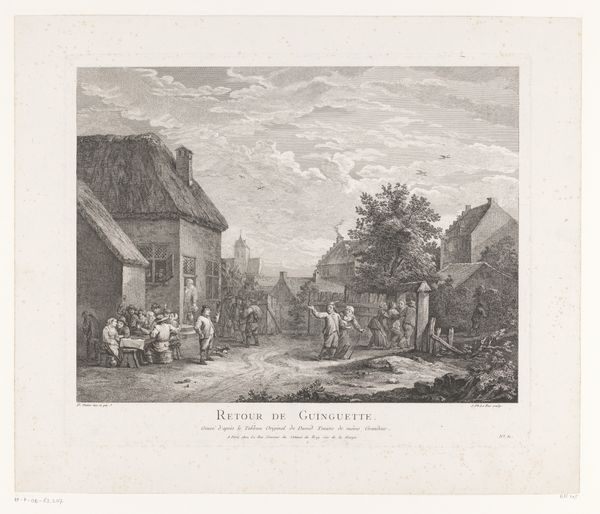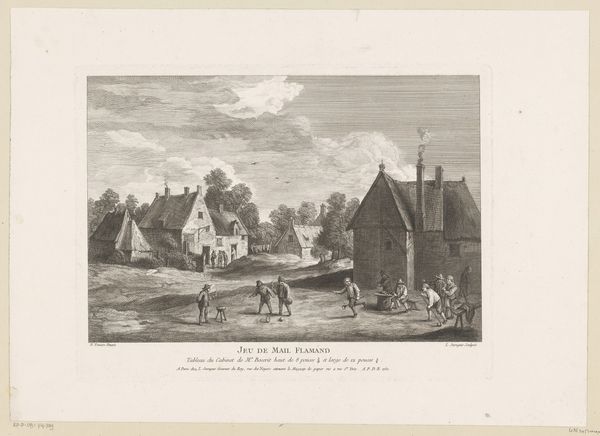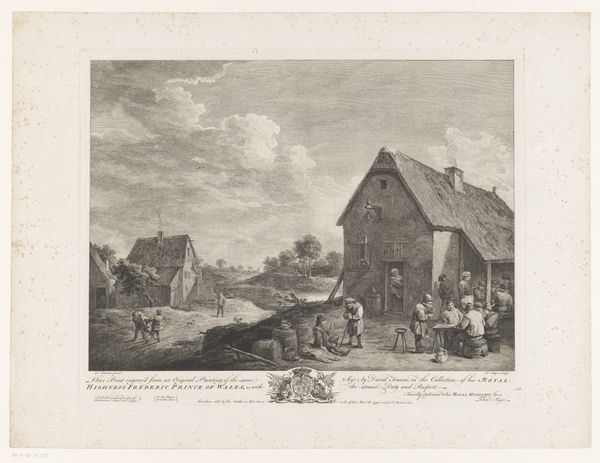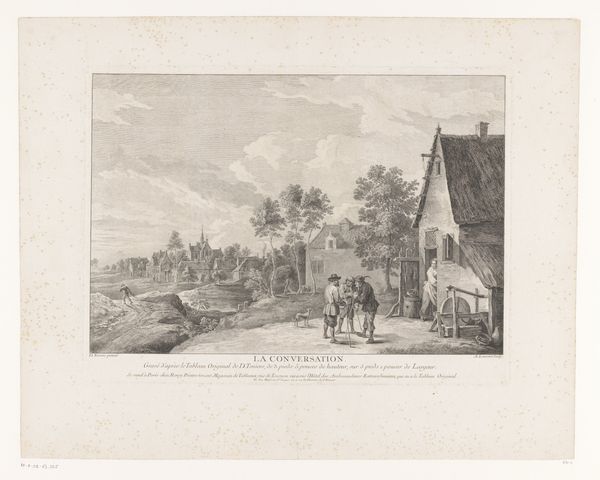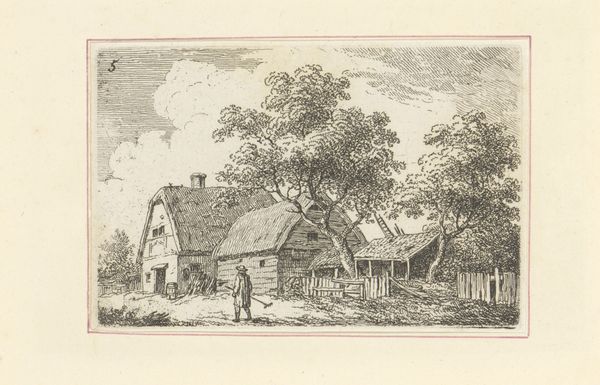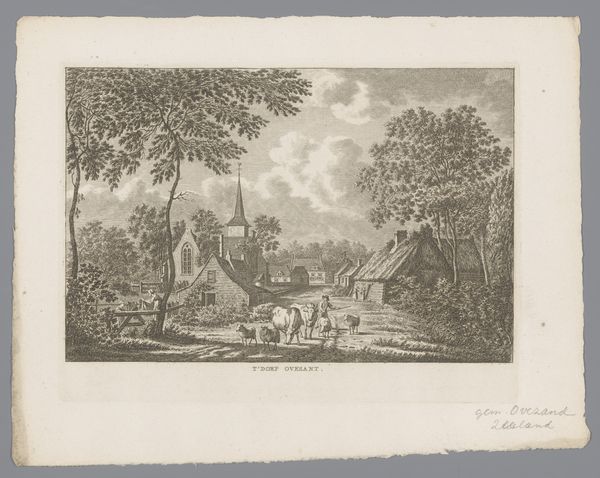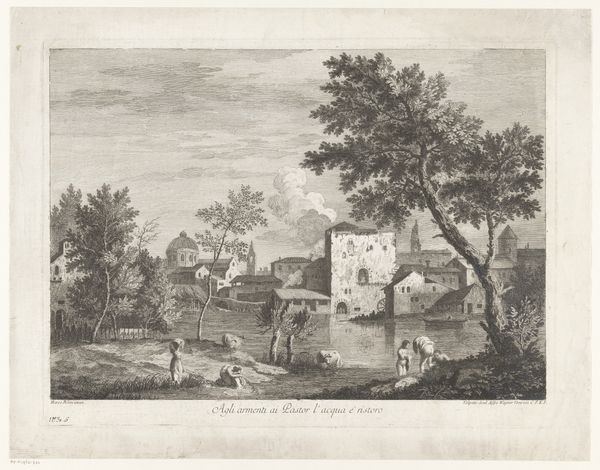
print, engraving
#
baroque
# print
#
old engraving style
#
landscape
#
cityscape
#
genre-painting
#
engraving
#
realism
Dimensions: height 493 mm, width 395 mm
Copyright: Rijks Museum: Open Domain
Editor: This is “Reizigers met ezels en hoefsmid bij een smederij,” or "Travelers with Donkeys and a Blacksmith at a Forge," by Jean Jacques Le Veau, created around 1758. It’s an engraving, currently held at the Rijksmuseum. I’m really struck by how the artist uses such fine lines to create such depth and detail. What formal qualities stand out to you? Curator: The composition presents a fascinating interplay of light and shadow. Note the deliberate contrast between the dark, dense lines describing the buildings on the left and the softer, more diffused treatment of the open space towards the right. How does this juxtaposition affect your perception of the scene? Editor: It feels almost divided, with the hustle of labor on one side and a more relaxed, open vista on the other. Curator: Precisely. Consider the formal elements in isolation. The repeated diagonals of the rooflines establish a certain rhythm, which is then countered by the more organic, curving lines of the figures and animals. What is the effect of these formal devices, when put together? Editor: It almost creates a sense of movement, directing your eye across the print and pulling you into the more active parts of the scene. The perspective seems subtly distorted too, which enhances this feeling. Curator: Indeed. It is interesting to consider the function of distortion here. The slight elongation, especially of the figures, heightens a sense of theatricality. Are you picking up on similar stylistic choices within the work? Editor: Now that you point it out, yes, the rendering feels consciously stylized, not a perfectly objective depiction of reality. It is less concerned with verisimilitude than with presenting an aestheticized vision of everyday life. I see a kind of dance between observation and formal intervention, and I find that tension really compelling. Curator: Agreed. Through these intricate arrangements of line, light, and form, we are provided a glimpse into not only the image, but the artist's sensibilities, style, and vision, creating, rather beautifully, an expressive visual document.
Comments
No comments
Be the first to comment and join the conversation on the ultimate creative platform.

